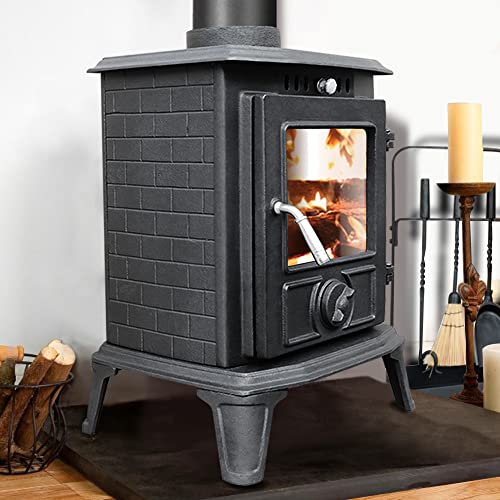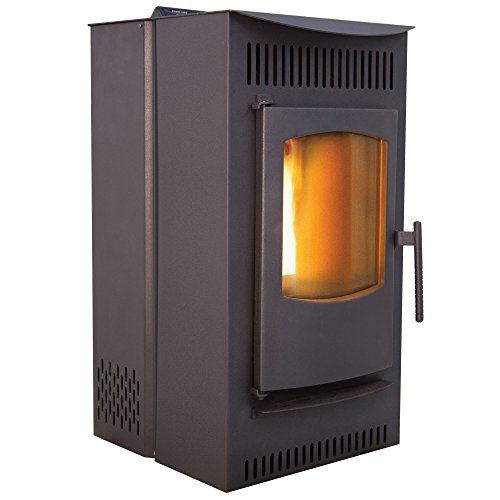24 Hours For Improving Woodburning Stove
작성자 정보
- Adela 작성
- 작성일
본문
 How to Maintain a Woodburning Stove
How to Maintain a Woodburning StoveA wood-burning stove is an effective and efficient to heat your home. It is important to maintain your woodburning stove in order to ensure that it performs at its peak.
Tips: Choose wood stoves that is seasoned with a low moisture content. This will give you longer burn time and a higher heat output.
The state environmental agencies are struggling to find a solution to the problem of particulate pollution caused by the old wood-burning stoves.
How They Work
As the name implies, woodburning stoves burn wood in order to generate heat. They accomplish this by enclosing the fire inside a steel and glass body. This also helps keep the temperature of your home at a consistent level. It also acts as an obstruction to smoke from entering your living space.
Stoves regulate combustion by regulating the amount of oxygen they let into the fire. This is done via one or more air vents that can be closed and opened to regulate the amount of oxygen entering the fire.
Modern stoves use either non-catalytical or catalytical technology to control this. Catalytic stoves come with a catalytic convertor woodburning stove that is designed to reburn the gas that is generated during primary combustion to ensure they do not escape from the room. Non-catalytical stoves don't have an catalyser but rely on secondary combustion within the firebox in order to reduce emissions.
It is recommended that you only use seasoned wood in your woodburning stove. It should have a moisture level lower than 20%, which will allow the fire to burn efficiently. This will help reduce smoke and harmful pollutants in the flue system and will make the glass inside your electric stove fire less prone to become blackened by creosote, a result of burning wood burning stove for sale that can accumulate over time.
In addition to reducing emissions well-seasoned wood can also save money on your heating bills because it produces more heat for a given amount of fuel. This is because the surface area of the wood that is drier is greater and produces more heat per unit.
Wood smoke can be harmful to anyone, but it is particularly dangerous to children and adults with weakened lung. It can also irritate people with lung conditions like asthma or chronic obstructive pulmonary disease (COPD). If you reside in a designated smoke-control zone, ensure that your stove is properly seasoned. It must also be fitted with a chimney that is in compliance with the standards of the area.
Burning Wood
Woodburning stoves are a green and renewable source of heat. They can also be used to keep your home warm during a power outage. They also aid in reducing carbon dioxide emissions, which can be harmful to the environment from fossil fuels such as oil and gas.
Modern woodburning stoves work more efficiently than older models and are designed to avoid creosote build-up but it is still important to monitor the process of combustion. Creosote, a dangerous byproduct of incomplete combustion, can clog the chimney and cause it to lose its efficiency. It also poses the risk of fire. Using seasoned logs will keep creosote at a minimum and help you save money on logs. It can also help you avoid having to hire a professional to clean your chimney.
You can also choose stoves that burn wood and coal offering you the option of choosing between carbon-neutral sources of energy. It is important to remember that coal is not a sustainable fuel and there are concerns about the way it is extracted.
It is recommended to pick an approved stove by Defra, and preferably one that is Ecodesign ready. They will be compliant with the most recent emission regulations. The UK building regulations have specific requirements for how the flue is fitted and the size of the hearth and the distance the stove is from flammable materials It is therefore advisable to consult one of our stove experts prior to buying a stove.
Paper and other combustibles, such as garbage and paper should not be put in woodburning appliances. They can contribute to pollution, and at worst, a chimney fire. At best, they will cause them to be less efficient. Other combustibles are lighter than firewood, and thus will burn at lower temperatures and produce more particles.
It is important to only use properly seasoned, split and dried firewood. This will allow the wood burning stove sale to burn more efficiently. Using wet or damp wood produces a lot of smoke, as well as generating more pollution. It is also recommended that you use a good quality stove pipe to ensure the flue temperatures are high enough and that it has been installed correctly.
Emissions
Woodburning stoves emit a myriad of gases and particles. They produce a large amount of fine particulate (PM2.5) that can enter the lungs, get into the bloodstream and possibly harm the liver, heart and brain. However, they also produce carbon monoxide, nitrogen oxides and carcinogenic compounds such as polycyclic aromatic hydrocarbons, also known as PAHs. Some even spit out poisonous metals, such as arsenic and mercury, depending on what they're burning.
In the US There have been a number of attempts to regulate the amount of pollution woodburning stoves produce with different degrees of success. In 1988 the Environmental Protection Agency established emission guidelines that regulated the amount of pollution new stoves were allowed to release. Since then, there have been two changes to the regulations. The most recent revision in 2015 mandates that all units, catalytic or non-catalytic, release no more than 4 grams of pollution each hour.
These strict regulations caused a major shake-up within the industry, forcing hundreds of small manufacturers out of business. However they also sparked a race to design efficient stoves that could last and could produce lower emissions than traditional models. Stove designers looked at and analysed combustion air flows, baffles, combustion chamber shapes, insulating materials and recirculation systems to make their products better. Over time, they succeeded.
The emission levels are mostly influenced by the moisture content of the wood burned. The higher the moisture level, the more pollutants the stove can produce. This is why the best way to reduce emissions is to use seasoned firewood that's been properly dried for 6-8 months.
According to numerous studies, comparing exhaust-related particle pollution only wood burning stoves could produce as much particle contamination as 15 diesel vehicles. These tests were not scientific. These studies do not take into account that the majority of particle pollution from cars comes from its engine, brakes, and tyres, rather than its exhaust.
Ten blue states have been putting pressure on the EPA to review its carbon emissions and guidelines for air quality for wood-burning stoves. Attorneys general from New York, Washington and Illinois have announced that they will sue the EPA in the event that it continues to allow high-emitting stoves to continue to be sold in homes across the nation.
Maintenance
Wood burning stoves are efficient in heating homes, but they can be difficult to maintain. To keep your stove looking and operating properly, you will need to clean it frequently. A dirty stove could be detrimental to the health of occupants and the amount of heat it produces. Cleaning the stove isn't the only maintenance task that needs to be completed to ensure it is functioning properly.
Cleaning the exterior and interior of a stove is easy to do. Cleaning your stove is recommended every week or every two weeks depending on the frequency at which it is used. It is recommended to remove ash from the firebox each time after the woodburner stove has been used. Spread an old newspaper over the floor prior to scooping the ashes out of the stove, and put on gloves to protect your hands. It's also recommended to utilize a ash container made of metal instead of a bucket since this will help prevent rust.
It is crucial to keep the flue and chimney clean. A professional chimney sweep should be employed once or twice a year to clean the stove and chimney thoroughly. This will help to keep creosote from accumulating and reduce the risk of fires on chimneys.
A chimney should also be inspected for creosote buildup and cracks along with bird nests, and other debris. A professional chimney sweep can fix these issues to create a safe and working chimney.
Over time, the glass from a wood-burning stove may become clouded and smudged with soot. Spray an ammonia-based mixture and water on the glass, and wipe it clean with a clean cloth. It is advised to avoid scratching the glass as this can weaken it and cause it to shatter when it gets hot.
Paint that is heat resistant can be used to paint a woodburning fireplace if the paint begins to chip. These paints can be purchased at the majority of wood stove retailers and are available in a broad variety of colors.

관련자료
-
이전
-
다음
댓글 0
등록된 댓글이 없습니다.
.png)






